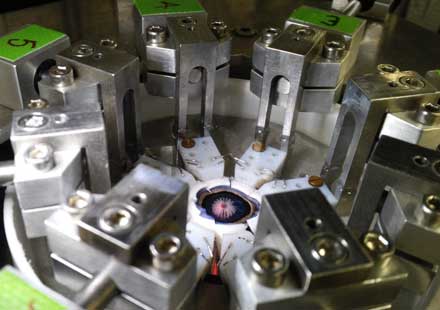A femtosecond laser-based method for treating presbyopia — farsightedness caused by loss of elasticity of the lens of the eye — could eventually eliminate a patient's need for reading glasses.
A virtual model of the technique — called femtosecond- or fs-lentotomy — is being developed to simulate the surgery, in which the eye’s crystalline lens is made flexible again by performing microcuts with an fs laser.

Femtosecond laser applying microcuts in the lens in a stretcher. Courtesy of LZH.
Researchers from the nonprofit research institute Laser Zentrum Hannover e.V. (LZH), along with project partners Optimo Medical AG, a software developer, and Rowiak GmbH, a laser systems developer, aim to develop a predictable, gentle surgical method to treat presbyopia.
The Image-Guided Laser Surgery Group of LZH’s Biomedical Optics Department is developing an experimental setup to measure the influence of the microcuts on the crystalline lens.
The complex testing and measurement setup can stretch and unstretch a sample crystalline lens — in this case, an animal byproduct — in order to simulate different focus distances of the eye. The researchers can then measure the changes in the beam path, a technique known as ray tracing, through the lens both before and after the microcuts in the eye have been made.
With the results of these experiments, cutting patterns for the surgical correction of presbyopia could be determined and optimized, the researchers said. The cutting patterns and the measurement results of the experiments will then be entered into a software to create a virtual lens model on which the surgical correction can be simulated prior to the surgery. Clinical adoption will require the ability to customize the software, LZH said.
LZH is an independent, nonprofit research institute focused on optical components and systems, optical production technologies and biomedical photonics.